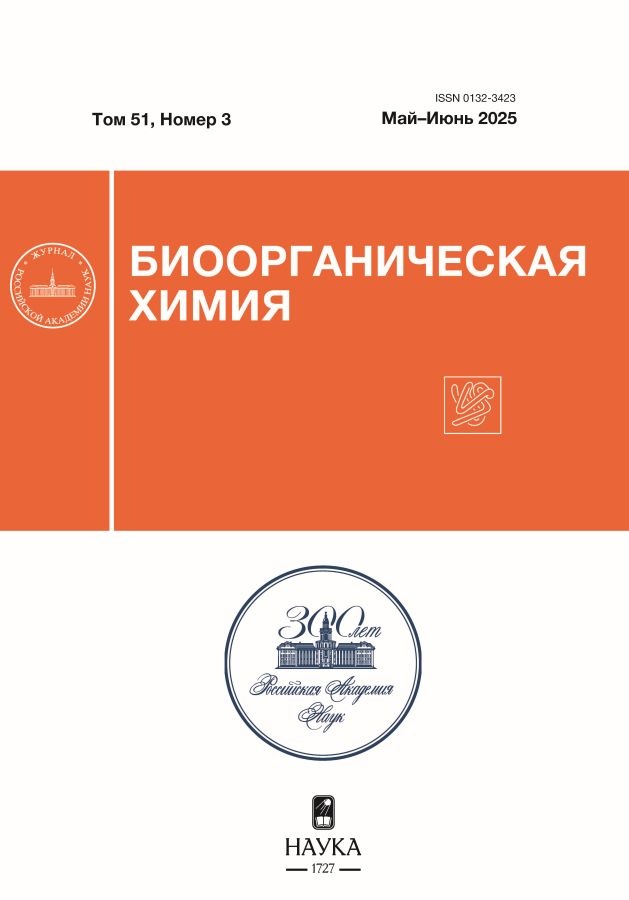Regulation of pou5f3 family pluripotency gene transcripts stability by Ybx1 ribonucleoprotein complexes in Xenopus laevis early development
- Authors: Parshina Е.А.1, Zaraisky A.G.1, Martynova N.Y.1
-
Affiliations:
- Shemyakin–Ovchinnikov Institute of Bioorganic Chemistry of the Russian Academy of Sciences
- Issue: Vol 51, No 3 (2025)
- Pages: 486-495
- Section: ОБЗОРНАЯ СТАТЬЯ
- URL: https://ruspoj.com/0132-3423/article/view/686997
- DOI: https://doi.org/10.31857/S0132342325030113
- EDN: https://elibrary.ru/KRCMXF
- ID: 686997
Cite item
Abstract
Here, we studied the regulation of pou5f3 family transcripts stability by association with Ybx1, a protein of ribonucleoprotein complexes. It is known that the clawed frog Xenopus laevis has three genes belonging to the POU5 family: pou5f3.1/oct91, pou5f3.2/oct25, and pou5f3.3/oct60. The Pou5f3 family factors are orthologues of the mammalian embryonic stem cell OCT4 pluripotency factor. However, the expression patterns of these genes differ over time. Pou5f3.3/oct60 transcripts are stored in oocytes, are present in large quantities in fertilized eggs, and then degrade only after fertilization. Pou5f3.2/oct25 transcripts are also present in the zygote, but their numbers increase even more during the development process. Finally, pou5f3.1/oct91 transcription begins only after the activation of the embryo genome at the middle blastula stage. In the present work, we revealed a much higher specificity of the Ybx1 factor to form a complex with the maternal mRNA of the pou5f3.3/oct60 gene compared to zygotic mRNAs of the pou5f3.1/oct91 and pou5f3.2/oct25 genes. Since Ybx1 is a protein that, on the one hand, is involved in interaction with cytoskeletal proteins, and, on the other hand, binds and stabilizes pluripotency genes mRNA, it can play a linking role in between the degradation of these maternal transcripts and cytoskeletal rearrangements during the onset of morphogenetic cell movements in the process of formation of germ layers.
Keywords
Full Text
About the authors
Е. А. Parshina
Shemyakin–Ovchinnikov Institute of Bioorganic Chemistry of the Russian Academy of Sciences
Email: martnat61@gmail.com
Russian Federation, ul. Miklukho-Maklaya 16/10, Moscow, 117997
A. G. Zaraisky
Shemyakin–Ovchinnikov Institute of Bioorganic Chemistry of the Russian Academy of Sciences
Email: martnat61@gmail.com
Russian Federation, ul. Miklukho-Maklaya 16/10, Moscow, 117997ul. Miklukho-Maklaya 16/10, Moscow, 117997
N. Y. Martynova
Shemyakin–Ovchinnikov Institute of Bioorganic Chemistry of the Russian Academy of Sciences
Author for correspondence.
Email: martnat61@gmail.com
Russian Federation, ul. Miklukho-Maklaya 16/10, Moscow, 117997
References
- Onichtchouk D. // Biochimica et Biophysica Acta. 2016. V. 1859. P. 770–779. https://doi.org/10.1016/j.bbagrm.2016.03.013
- Gold D.A., Gates R.D., Jacobs D.K. // Mol. Biol. Evol. 2014. V. 31. P. 3136–3147. https://doi.org/10.1093/molbev/msu243
- Rosner M.H., Vigano M.A., Ozato K., Timmons P.M., Poirier F., Rigby P.W., Staudt L.M. // Nature. 1990. V. 345. P. 686-692. https://doi.org/10.1038/345686a0
- Downs K.M. // Dev Dyn. 2008. V. 237. P. 464–475. https://doi.org/10.1002/dvdy.21438
- Morichika K., Sugimoto M., Yasuda K., Kinoshita T. // Zygote. 2014. V. 22. P. 266-274. https://doi.org/10.1017/S0967199412000536
- Hinkley C.S., Martin J.F., Leibham D., Perry M. // Mol. Cell. Biol. 1992. V. 12. P.638–649. https://doi.org/10.1128/mcb.12.2.638-649.1992
- Cao Y., Knochel S., Donow C., Miethe J., Kaufmann E., Knochel W. // J. Biol. Chem. 2004. V. 279. P. 43735– 43743. https://doi.org/10.1074/jbc.M407544200
- Cao Y., Siegel D., Knöchel W. // Mech Dev. 2006. V. 123. P. 614–625. https://doi.org/10.1016/j.mod.2006.06.004
- Cao Y., Siegel D., Donow C., Knöchel S., Yuan L., Knöchel W. // EMBO J. 2007. V. 26. P. 2942–2954. https://doi.org/10.1038/sj.emboj.7601736
- Parshina E.A., Zaraisky A.G., Martynova N.Yu. // Bioorg. Chem. 2020. V. 46. P. 1–10. https://doi.org/10.2139/ssrn.3554017
- Jacobson A., Peltz,S.W. // Ann. Rev. Biochem. 1996. V. 65. P. 693–739. https://doi.org/10.1146/annurev.bi.65.070196.003401
- Evdokimova V.M., Ovchinnikov L.P. // Int. J. Biochem. Cell. Biol. 1999. V. 31. P. 139–149. https://doi.org/10.1016/s1357-2725(98)00137-x
- Evdokimova V., Ruzanov P., Imataka H., Raught B., Svitkin Y., Ovchinnikov L.P., Sonenberg N. // EMBO J. 2001. V. 20. P. 5491–5502. https://doi.org/10.1093/emboj/20.19.5491
- Bouvet P., Matsumoto K., Wolffe A.P. // J. Biol. Chem. 1995. V. 270. P. 28297–28303. https://doi.org/10.1074/jbc.270.47.28297
- Eliseeva I.A., Kim E.R., Guryanov S.G., Ovchinnikov L.P., Lyabin D.N. // Biochemistry (Moscow). 2011. V. 76. P. 1402–1433. https://doi.org/10.1134/S0006297911130049.
- Parshina E.A., Eroshkin F.M., Оrlov E.E., Gyoeva F.K., Shokhina A.G., Staroverov D.B., Belousov V.V., Zhigalova N.A., Prokhortchouk E.B., Zaraisky A.G., Martynova N.Y. // Cell. Rep. 2020. V. 33. P. 108396. https://doi.org/10.1016/j.celrep.2020.108396
- Martynova N.Y., Parshina E.A., Zaraisky A.G. // STAR Protocols. 2021. V. 2. P. 100552. https://doi.org/10.1016/j.xpro.2021.100552
- Livigni А., Peradziryi H., Sharov A.A., Chia G., Hammachi F., Portero Migueles R.P., Sukparangsi W., Pernagallo S., Bradley M., Nichols J., Ko M.S.H., Brickman J.M. // Curr. Biol. 2013. V. 23 P. 2233– 2244. https://doi.org/10.1016/j.cub.2013.09.048
- Ruzanov P.V., Evdokimova V.M., Korneeva N.L., Hershey J.W., Ovchinnikov L.P. // J Cell Sci. 1999. V. 112. P. 3487–3496. https://doi.org/10.1242/jcs.112.20.3487
- Martynova N.Y., Parshina E.A., Eroshkin F.M., Zaraisky A.G. // Russ. J. Bioorg. Chem. 2020. V. 46. P. 530–536. https://doi.org/10.1134/S1068162020040147
- Livak K.J., Schmittgen T.D. // Methods. 2001. V. 25. P. 402–408. https://doi.org/10.1006/meth.2001.1262
- Ivanova A.S., Korotkova D.D., Martynova N.Y., Averyanova O.V., Zaraisky A.G., Tereshina M.B. // Russ. J. Bioorg. Chem. 2018. V. 44. P. 358–361. https://doi.org/10.1134/S106816201803007X
Supplementary files












